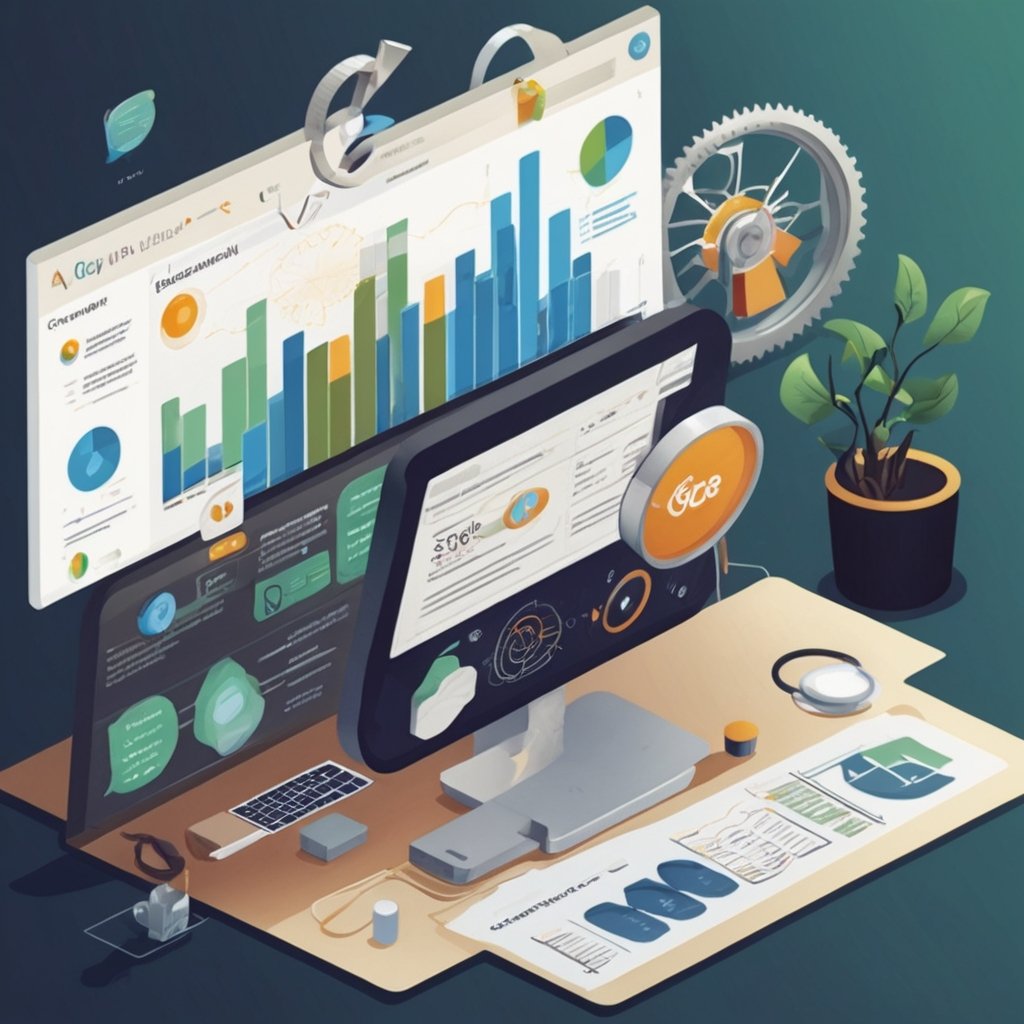What’s Stopping theVisitors from Converting? Discover the Power of Conversion Rate Optimization
You’ve put time, effort, and budget into driving traffic to your website. But when you check your analytics, the numbers don’t lie—visitors are not converting into customers. This disconnect is not just frustrating; it’s costly. Conversion rate optimization (CRO) is more than a buzzword—it’s a necessity in today’s competitive digital landscape.
In this blog, we’ll uncover the most common barriers to website conversions and how to address them through practical, data-driven strategies.

1. Poor User Experience (UX)
A cluttered interface, confusing navigation, and slow loading times are silent killers of conversions. If users struggle to find what they’re looking for or feel overwhelmed by your layout, they’re likely to bounce.
To improve UX:
- Ensure fast page loading speeds (ideally under 3 seconds).
- Use clear and consistent navigation menus.
- Design with mobile responsiveness in mind.
- Minimize distractions and highlight key actions.
A seamless user experience builds trust and encourages visitors to stay longer and engage more deeply.
2. Lack of a Clear Value Proposition
Your website must immediately communicate why a visitor should care. If users don’t understand what makes your product or service unique, they won’t be motivated to take the next step.
Define your value proposition:
- What problem do you solve?
- How is your solution better than others?
- Why should someone trust your brand?
Craft a compelling headline and use supporting copy that reinforces your core message without fluff.
3. Weak or Missing Calls-to-Action (CTAs)
CTAs guide users toward the desired action—whether it’s signing up for a newsletter, booking a demo, or making a purchase. Vague or hidden CTAs result in missed opportunities.
Strengthen your CTAs:
- Use action-oriented language (“Download Now,” “Get Started,” “Claim Your Free Trial”).
- Place them in strategic locations (above the fold, end of content, in pop-ups).
- Make them visually distinct with contrasting colors and buttons.
The right CTA can significantly influence a visitor’s decision to convert.
4. Mismatched Messaging
There’s often a gap between what your ads or search results promise and what users find when they land on your page. This creates confusion and distrust, leading to high bounce rates.
Ensure message alignment:
- Match headlines and offers with ad content and keywords.
- Keep your tone and visuals consistent across platforms.
- Reinforce your message with testimonials or trust signals.
Cohesive messaging builds confidence and encourages deeper engagement.
5. Overcomplicated Forms
Lengthy, intrusive, or poorly designed forms are one of the top reasons users abandon the conversion process. Each additional field increases friction and decreases completion rates.
Simplify form design:
- Only ask for essential information.
- Use progressive profiling to gather more data over time.
- Clearly explain why certain data is needed.
A streamlined form improves usability and accelerates conversions.
6. Lack of Trust and Credibility
Visitors won’t convert if they don’t trust your brand. With online scams on the rise, users are cautious about sharing their personal information or making a purchase.
Build credibility with:
- SSL certificates and secure payment gateways.
- Real customer reviews and case studies.
- Trust badges, awards, or certifications.
Social proof and transparency go a long way in reassuring potential customers.
7. Unoptimized Content and Visuals
Unclear content, poor grammar, or low-quality visuals can make your brand appear unprofessional. If visitors can’t quickly understand what you offer or why it matters, they’ll move on.
Enhance your content:
- Use simple, concise language tailored to your audience.
- Include engaging images, infographics, or videos.
- Break up text with bullet points, headings, and white space.
Great content guides, educates, and persuades visitors to take the next step.
8. Inadequate Tracking and Analytics
If you’re not tracking conversions, it’s hard to understand what’s working and what’s not. Many businesses fall short because they make decisions based on assumptions rather than data.
Set up robust tracking:
- Use tools like Google Analytics and Hotjar.
- Monitor behavior flows, conversion funnels, and exit pages.
- A/B test landing pages, headlines, and CTAs.
Data-driven decisions lead to more effective optimization.
9. Not Understanding the Buyer’s Journey
Every visitor is at a different stage of the buying process. Some are just exploring, others are comparing options, and a few are ready to buy. Presenting the wrong message at the wrong time leads to lost opportunities.
Map your content to the customer journey:
- Provide educational content for top-of-funnel users.
- Offer case studies or demos for middle-of-funnel users.
- Use urgency and clear offers for bottom-of-funnel conversions.
Tailoring content to intent improves relevance and increases conversions.
10. Ineffective Social Media Landing Pages
Driving traffic from social media is only half the battle—if your landing pages don’t match user expectations or fail to guide them toward action, conversions suffer. Many brands focus on content creation and ad spend but overlook the post-click experience.
To improve social-driven conversions:
- Align your landing page messaging with the tone and intent of your social post or ad.
- Use dedicated landing pages for specific campaigns or audience segments.
- Keep the design mobile-optimized, since most social media traffic comes from mobile devices.
Social media marketing should not just generate clicks—it should drive meaningful engagement and conversions through a cohesive user journey.
Conclusion
Conversion optimization isn’t about guessing—it’s about identifying and removing friction points that prevent users from taking action. Whether it’s a clearer value proposition, stronger CTAs, or mobile-friendly design, the goal is to guide visitors through a seamless path from interest to action.
By addressing these common conversion killers, you can turn passive browsers into paying customers and transform your website into a high-performing marketing asset.
If you’re serious about mastering conversion rate optimization and digital marketing, consider learning from experts at Nextwave Academy. Their hands-on courses and real-world strategies are designed to help you grow your skills and elevate your marketing performance. Visit https://nextwaveacademy.in/ to explore your learning path today.
